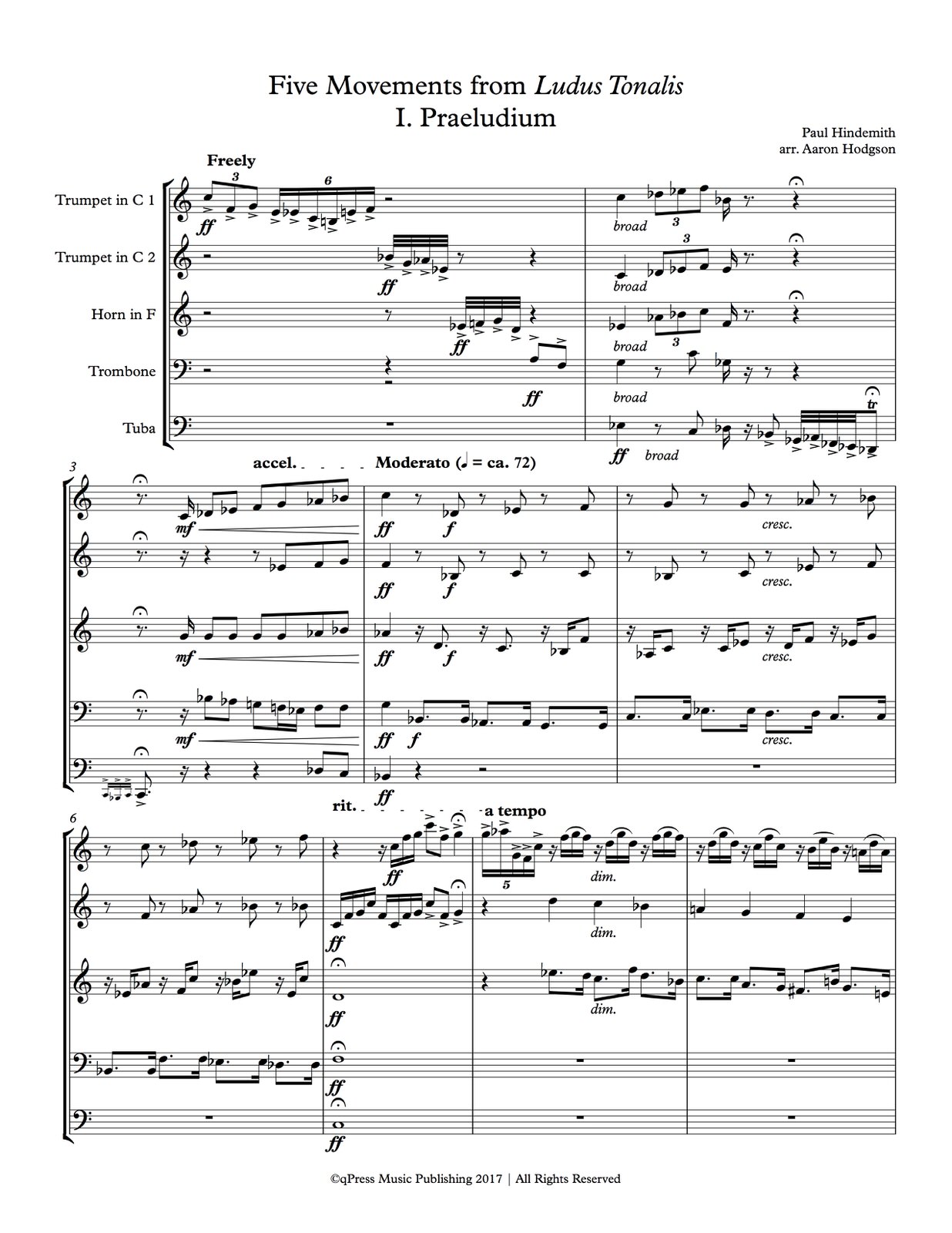
In this system, the major-minor duality is meaningless and the practice of modulation is dropped, although subject modulation occurs in the second fugue, to create growing tension. The affinity of each note with the keynote is directly related to its position on the harmonic scale. Ludus Tonalis can be thought of as the most direct application of Hindemith's theory that the twelve tones of the equally tempered scale all relate to a single one of them (called a tonic or keynote). Wiener Urtext - The paradigm of Hindemiths mould of musical thinking was to be the Ludus tonalis, a modern-day equivalent of the Kunstbuch although it.

Unlike Bach's work, though, the non-fugal pieces in Ludus Tonalis frequently repeat the work's main theme. Like a rattler, you know it’s there but you don’t dare look. Ludus Tonalis was intended to be the twentieth-century equivalent to J.S. The 1943 Ludus Tonalis set for solo piano, premiered by Artur Schnabel in Chicago that year, is Hindemith’s attempt at a Goldberg Variations, contrapuntal as a dyspeptic snake, turning this way and that, striking without warning. The hour-long piano cycle itself finds refuge from conflict in the reassertion of the time-honoured value of counterpoint, comprising twelve fugues and interludes framed by a prelude and its mirror image as a postlude. The tonalities of the fugues follow the order of his Serie 1 and use the keynote C (see The Craft of Musical Composition). Hindemith wrote Ludus tonalis in 1942 while staying the US as a refugee from Nazi Germany.

In between, there are twelve three-part fugues separated by eleven interludes, beginning in the tonality of the previous fugue and ending in the tonality of the next fugue (or in a different tonality very close to that). The piece, which comprises all 12 major and/or minor keys, starts with a three-part Praeludium in C resembling Johann Sebastian Bach's toccatas, and ends with a Postludium which is an exact retrograde inversion of the Praeludium. Ludus Tonalis by Paul Hindemith Other versions of this composition Fuga prima in C - Ludus Tonalis - Hindemith. From the first and final movements, respectively.

Piano work by Paul Hindemith Opening ( Play i) and second to last ( Play i) measures of the piece. Ludus Tonalis ('Play of Tones', 'Tonal Game', or 'Tonal Primary School' after the Latin Ludus Litterarius ), subtitled Kontrapunktische, tonale, und Klaviertechnische bungen ( Counterpoint, tonal and technical studies for the piano ), is a piano work by Paul Hindemith that was composed in 1942 during his stay in the United States.


 0 kommentar(er)
0 kommentar(er)
